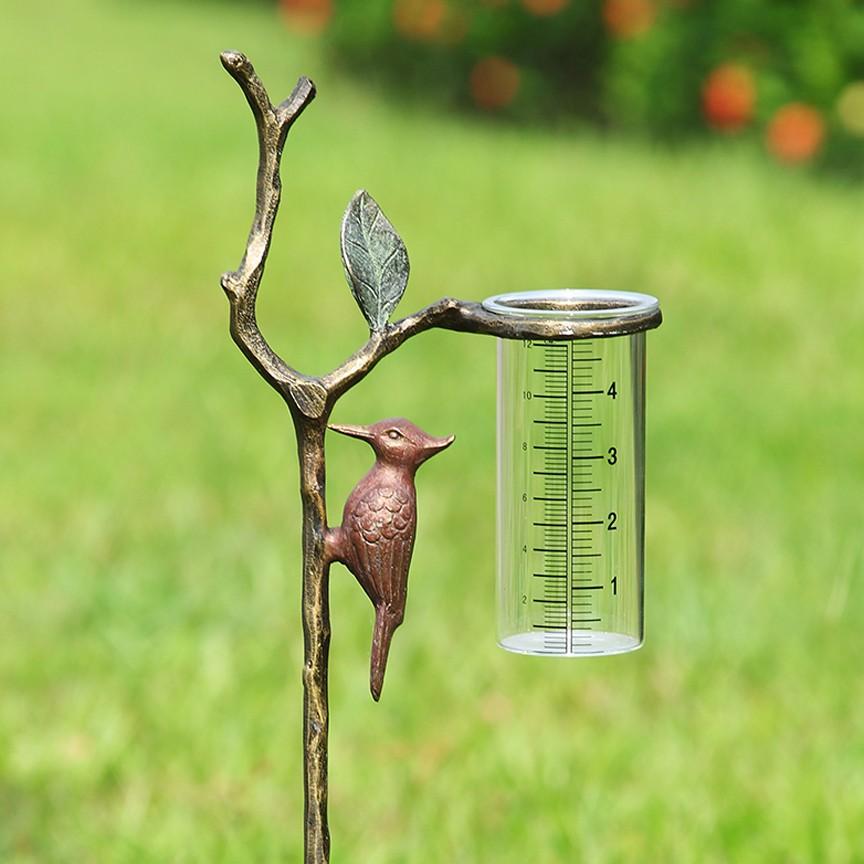Innovative Designs in Rain Gauges: What Makes Them Stand Out
Innovative Designs in Rain Gauges: What Makes Them Stand Out
Blog Article
Introducing the Science Behind Rain Gauges: Exactly How These Devices Play a Vital Function in Environment Research Study and Environmental Surveillance
Rain gauges, seemingly straightforward devices, hold a profound value in the realm of environment research study and ecological monitoring. These simple instruments quietly accumulate one of nature's most essential components-- rainfall. Yet, behind their unpretentious facade lies a complicated scientific research that is indispensable for comprehending the dynamics of our environment. As we peel off back the layers of this clinical veil surrounding rainfall determines, we discover a world where accuracy, information accuracy, and careful observation converge to unveil a deeper understanding of our transforming environment and its influence on the earth.
Significance of Rainfall Gauges
Rainfall assesses play an important function in monitoring and gauging precipitation degrees, giving necessary data for climate study and analysis. These devices are essential in measuring the amount of rainfall that occurs in a specific location over a certain duration. By measuring and collecting rain, rain gauges deal important insights right into the distribution and strength of precipitation, assisting meteorologists, hydrologists, and climatologists in comprehending weather patterns and trends.
Furthermore, long-lasting information collected from rain evaluates aids in assessing environment change effects and patterns, contributing substantially to clinical study and decision-making procedures. In essence, rainfall gauges serve as necessary devices in the field of meteorology and environmental science, playing an important duty in advancing our understanding of climate and climate characteristics.
Sorts Of Rainfall Scales

Functionality and Operation
In the realm of environment study and meteorological researches, the efficiency of rain evaluates lies in their elaborate capability and exact operational systems. Rain evaluates are developed to properly measure the quantity of rainfall that drops over a particular location throughout a set duration.
The capability of rain assesses is based upon the principle of accumulating and determining rainwater in a standard manner. This accumulated data is critical for understanding neighborhood weather patterns, tracking long-lasting environment trends, and examining ecological effects. To make certain accurate measurements, rainfall determines demand to be strategically put in open locations far from obstructions such as buildings or trees that could conflict with the collection procedure.
The operational aspect of rain assesses includes normal upkeep to avoid particles buildup, calibration checks to maintain dimension accuracy, and data tape-recording for evaluation (rain gauge). On the whole, the capability and operation of rain assesses are essential for gathering reliable precipitation data crucial to environment study and ecological tracking
Function in Environment Research Study
Provided the important importance of exact rainfall dimensions in recognizing climate patterns and ecological influences, the role of rain evaluates in climate research is essential. Rain evaluates provide essential data for environment study by measuring the amount of precipitation that falls over a particular location throughout a provided period. This data is essential for keeping an eye on long-lasting trends in rainfall patterns, evaluating the effect of climate change on rains distribution, and improving climate models.

Environment researchers use data accumulated from rain determines to examine variants in precipitation levels, recognize local climate fads, and assess the effectiveness of water source management strategies. By contrasting historic precipitation information with present measurements, scientists can detect changes in rainfall patterns, such as modifications in the frequency or strength of rains events. This info is crucial for recognizing how environment adjustment is influencing precipitation dynamics and can help policymakers make educated decisions relating to adjustment and mitigation strategies.
Applications in Ecological Monitoring

In flooding forecasting, you could try here rainfall scale information assists to track rainfall intensity and circulation, permitting authorities to release prompt cautions and take needed steps to mitigate flooding threats (rain gauge). Dry spell surveillance depends on rain gauge data to examine wetness levels in the dirt and track rainfall shortages, helping in the recognition of drought-prone areas and the implementation of dry spell action techniques
Furthermore, rain scale data plays a vital duty in water resource management by giving info on water availability and use patterns. This information is utilized to make enlightened choices concerning water allocation, preservation measures, and lasting water resource preparation. In addition, in agriculture, rainfall gauge data helps farmers in enhancing irrigation timetables, crop choice, and overall farm monitoring techniques based on local rainfall patterns. In general, rainfall assesses are essential devices in environmental tracking, providing useful insights that add to notified decision-making and sustainable resource monitoring.
Final Thought
In final thought, rainfall assesses are essential devices for gauging rainfall, supplying important data for environment research study and environmental surveillance. With various types and performances, rain assesses play a crucial role in understanding rainfall patterns and their influence on the setting. By properly determining rainfall, these gadgets add to the improvement of scientific knowledge and help in over at this website making educated choices relevant to water source administration and catastrophe preparedness.
Rainfall assesses play a crucial duty in surveillance and determining precipitation degrees, supplying vital data for environment research study and analysis. The standard rainfall gauge, known as the "tipping pail" gauge, is one of the most commonly made use of gadgets. Ultrasonic rainfall assesses use audio waves to identify the visibility of rain, giving real-time data on rainfall levels.Climate researchers use data gathered from rainfall evaluates to analyze variants in rainfall levels, recognize regional environment trends, and review the performance of water resource management techniques.In conclusion, rainfall evaluates are vital tools for determining rainfall, giving valuable information for environment research and ecological monitoring.
Report this page